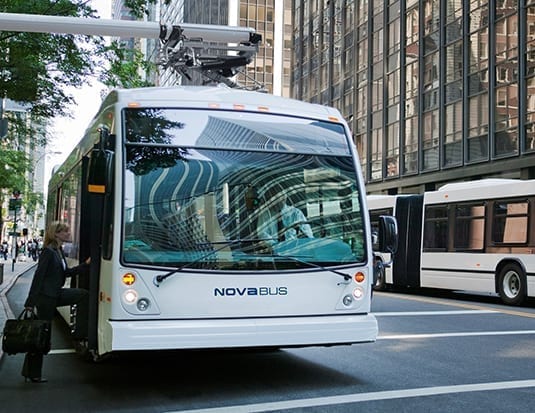Many municipal fleets are replacing diesel buses with electric models, and more are likely to buy into the idea in the years to come.
Transit fleets are emerging as early leaders in electrification of their vehicles. I am fortunate to have a front row seat to view the bold efforts being made by many Canadian municipalities.
Using electricity for mass transit is nothing new in Canada’s largest cities. Electric powered subways, streetcars, trolleys and light rail lines have been used for many years in Montreal, Toronto, Calgary and Vancouver. These transit fleets have great expertise in building and maintaining electrical supply service.
City councils are respecting the evidence of climate change offered by many scientific organizations and have made commitments to reducing carbon emissions. Many of these cities operate fleets of transit buses that are large producers of carbon emissions because of their high fuel consumption. A transit bus driven 200 km per day produces about 250 kg of greenhouse gases. Multiply this by all buses in the fleet (450 in the City of Brampton, for example) and extend this to a full year and the numbers become very large indeed.
Product availability and price
At least four bus manufacturers have market-ready electric buses. These include Nova Bus, New Flyer, Proterra and BYD. The price of a conventional diesel 40-foot bus is over $500,000. To go electric, there is a choice between hydrogen fuel cell and battery-electric energy. This will almost double the price of the bus, but comes with lower costs for fuel and maintenance. These buses are quieter than diesels which is an important attribute. They are expected to have fewer breakdowns and have longer service lives than diesels as well.
Buying new buses is the easy part. Installing the battery charging infrastructure (or hydrogen if chosen) at the bus depot is the real challenge. Many transit fleets are parked at facilities that are already at capacity. These fleets have to find space to put charging equipment in place, either on the ground or overhead. The charging equipment will use a substantial volume of electricity, in most cases more than the building was designed for. This means the transit fleet must work with the local electrical utility to upgrade power supply and ensure reliability.
Early adopters
There are several transit fleets that have already taken delivery of electric buses and are using them in regular service, from Quebec to British Columbia. Both of those provinces actively support the transition to electric buses. In fact, the Government of Quebec will end support for anything but electric buses for transit in 2025. In Ontario, there are three transit fleets with orders placed for electric buses including the Toronto Transit Commission which has ten in service already. Several more transit fleets are in the research and planning stages.
An important enabler of the transition to electric buses is the Canadian Urban Transit Research and Innovation Center – CUTRIC. This is a not-for-profit association bringing together transit fleets, bus manufacturers, electric vehicle supply equipment vendors, electric utilities and others in a project called the Pan Canadian Electric Bus Demonstration and Integration Trial. For transit fleets that have no experience with electric vehicles, this is providing broad access to expertise and knowledge that would otherwise take years to accumulate.
Expect to see more electric buses on the road soon.



